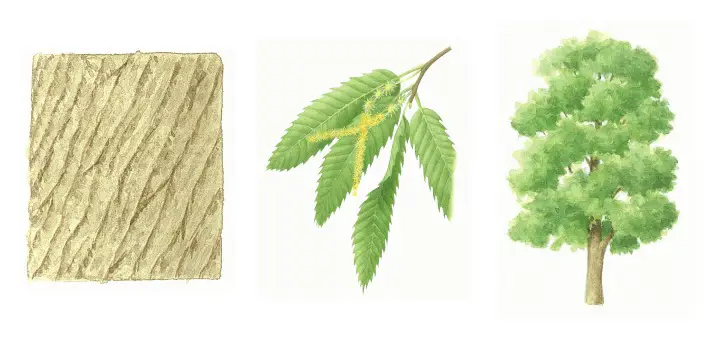Sweet chestnut
Sweet chestnut

The Romans introduced this tree - named the Castanea sativa in Latin - into Britain to produce the nuts which were ground up and made into polenta, a staple food of the legionnaires.
Roasted sweet chestnuts are tasty and nutritious, but most are imported as the British climate is too cold for them to ripen properly.
Facts and stats
- Uses: The yellowish-brown timber is strong and good for joinery and cabinet making, coffin boards, and fencing. It used to be used for pit props. In south-east of England it was widely planted for hop poles, and is often coppiced for fencing.
- Seeds: The husk splits to release up to three nuts in the autumn.
- Bark: Its bark has long diagonal fissures.
- Flowers: Some catkins have male and female flowers on the same stalk. The remains of the male catkin stay attached to the husk until it falls off.
- Height: Broadening with age, the sweet chestnut can reach up to 40 metres in height.
- Lifespan: 450 years
- Natural range: Mediterranean and Asia Minor